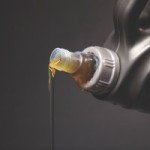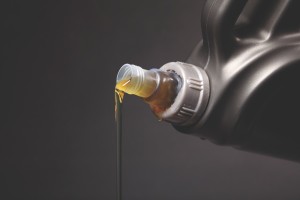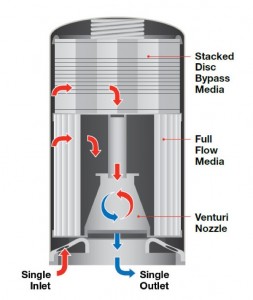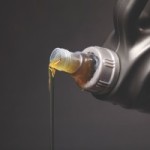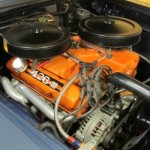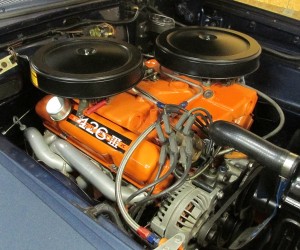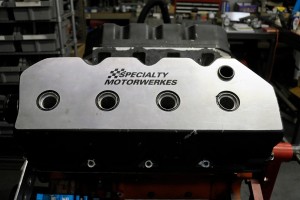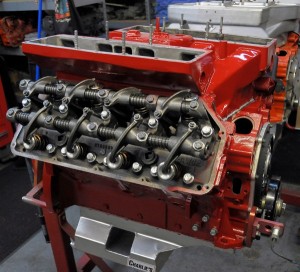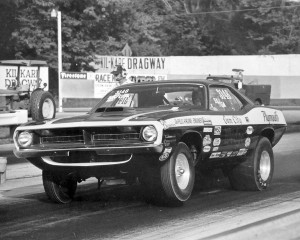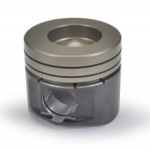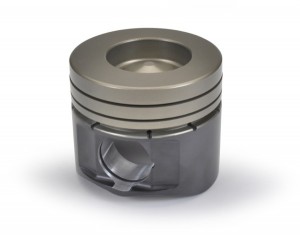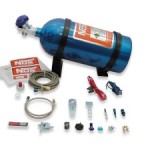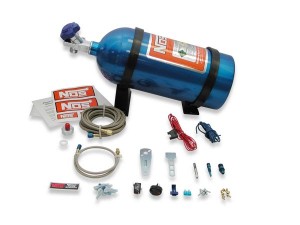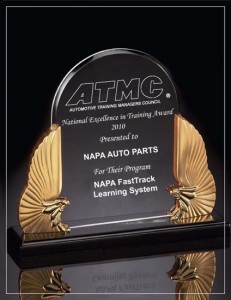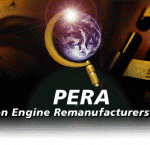Diesel engines have been around since the dawn of the automotive era. Over the years, diesels have become the engine of choice for powering heavy-duty trucks, buses, agricultural vehicles, off-road equipment, hard-working pickup trucks and stationary generators.
More recently, diesels are competing against hybrid and plug-in electric powertrains as an alternative to gasoline engines in passenger cars. The numbers are still relatively small in the U.S. with only about 800,000 passenger cars currently powered by a diesel engine.
But those numbers are expected to grow significantly in the years ahead – especially if fuel prices continue to rise and auto makers offer diesel-options in more makes and models.
By comparison, there are about 6 million diesel-powered light trucks registered in the U.S. and over 2 million diesel-powered heavy-duty trucks.
New clean diesel technology has drastically reduced emissions and now accounts for over 28% of all trucks registered in the U.S., according to R.L. Polk. Introduced in 2007 to comply with new government regulations, clean diesel engines are now found in nearly half a million heavy-duty trucks.
One of the changes that clean diesel technology brought with it was the need for higher-quality motor oils. The American Petroleum Institute (API) introduced the current CJ-4 oil standards back in 2006 so diesel motor oils would be compatible with 2007 model year engines equipped with exhaust gas recirculation (EGR), exhaust aftertreatment systems and designed to burn ultra-low sulfur (less than 15 ppm) diesel fuel. The higher operating temperatures and tougher emission requirements for clean diesel engines meant the oil had to provide better oxidation resistance, high temperature stability and soot control.
Diesel Oil Additives
One of the basic differences between oils formulated for diesel engines and those formulated for gasoline engines is more detergent and dispersant in the additive package.
Diesel engines (even clean diesels) still produce a lot of soot that ends up in the crankcase. If the oil can’t keep the soot in suspension, it can end up as sludge in the crankcase and elsewhere in the engine.
Diesel oils also contain a higher concentration of the anti-wear additive zinc-dialkyl-dithio-phosphate (ZDDP) to protect highly loaded sliding surfaces (like cam lobes and lifters) against wear.
The amount of ZDDP allowed in gasoline motor oils was cut back to 800 ppm in 2005 to help extend the life of the catalytic converter, but was allowed to remain at 1200 ppm in diesel motor oils.
The actual level of ZDDP in off-the-shelf diesel oils may vary from as low as 1000 ppm to as high as 1600 ppm according to various lab tests that have been performed by independent sources. That’s because the anti-wear properties of the oil depend, not only on the amount of ZDDP in the oil, but also other additives in the oil and the quality of the base oil itself.
The shift to low ZDDP gasoline motor oils in the market caused a sharp rise in flat tappet cam failures, especially in engines with stiffer than stock valve springs. Cam failure was not an issue in engines with roller cams because the rollers reduced friction on the cam lobes.
This lead many engine builders to recommend using diesel oil in gasoline engines if the engine had a flat tappet, high-lift performance cam and high-pressure valve springs.
The extra ZDDP in the diesel oil provided the extra protection needed to prevent the cam from failing. Today, we have numerous “racing oils” and “street performance oils” that are formulated with higher concentrations of ZDDP to protect flat tappet cams, as well as aftermarket ZDDP crankcase additives that can be used to fortify current gasoline oils in engines with flat tappet cams.
Diesel Oil Requirements
In addition to the API oil quality requirements, every OE engine supplier and vehicle manufacturer has its own oil specifications and viscosity recommendations. These include Allison, Caterpillar, Cummins, Detroit Diesel, Deutz, GM, Ford, Mack, Mercedes-Benz, Navistar, Volkswagen, Volvo and others. The specifications can vary depending on the model year and engine application. GM, for example, introduced its “dexos” specifications several years ago, and says that oils that meet its dexos2 specification should be used in its 2011 and newer diesel engines.
Oil Viscosity
For many years, 15W-40 had been the most common viscosity for diesel motor oils used in trucks. It provides a good high temperature protection and can be formulated from conventional base stocks or synthetics.
But, one of the drawbacks of a 15W-40 oil is that it makes the engine harder to crank when the engine is cold, so a thinner viscosity may be recommended for winter use in cold climates.
In recent years, a number of oil companies have introduced thinner 5W-40 diesel oils – not only for cold weather operation, but also for year-round use. Most of the 5W-40 diesel oils are a synthetic-blend or a full synthetic to achieve the cold flow characteristics needed for easy starting. Other cold weather diesel oils include 0W-30, which is formulated for subzero arctic-type conditions.
One of the benefits of using thinner oil is improved fuel economy. Thinner oils reduce drag and can help boost fuel economy from 1 to 3%. Switching a big over-the-road truck from a traditional 15W-40 oil to a full synthetic 5W-40 can produce significant fuel savings over time.
Of course, one of the tradeoffs of using a thinner full synthetic is its high initial cost, which can be up to two times or more than a conventional or blended motor oil.
Passenger car diesel applications are typically using thinner viscosity oils. The 2014 Chevy Cruze 2.0L turbo diesel is factory-filled with a dexos2 5W-30 motor oil. Many of the European turbo diesel powered cars also recommend 5W-30 as well as 5W-40 and 10W-40.
New Diesel Oil Standards & Viscosities
As of this writing, the target date for the introduction of a new set of API diesel oil standards is set for April 2016, almost 10 years after the last upgrade in oil standards. In the past, the main driving force in upgrading oil performance standards was emissions compliance. Today, the driving force is fuel economy and reducing carbon emissions.
API is still finalizing what exactly the new requirements and test procedures will be for what will likely be two new diesel oil ratings: one to replace the current CJ-4 standard (which will be backwards compatible for current CJ-4 applications), and a second oil standard (as yet unnamed) that will apply to 2016 and forward next generation diesel engines.
What they want is a new thinner viscosity oil that can provide better fuel economy while withstanding even higher operating temperatures with no sacrifice in durability, oxidation resistance, wear resistance and shear stability.
API is still developing the tests these new oils will have to pass in order to meet the new levels of performance. The current test procedure for determining oil viscosity is to heat an oil sample to 100 degrees C and measure how fast it flows through a calibrated orifice.
The test for the new 2016 diesel engine oil may involve heating the oil to 150 degrees C to measure its viscosity. Additional tests may include scuffing resistance, shear stability, oxidation stability and how well the oil can handle aeration.
There was also discussion as to whether or not a new test might be needed for compatibility with biodiesel fuels, but the consensus now is that biodiesel compatibility is not an issue now that biodiesel fuel quality has improved.
For now, the two new oil standards are code named PC11A for the oil that will replace the current CJ-4 oils, and PC11B for the next generation 2016 and forward engines. There may even be a new viscosity rating to help differentiate the PC11B oil from current viscosities that are on the market. According to one oil company, oils that meet the new PC11B requirements will likely have a high temperature viscosity rating around 26 (slightly lower than a traditional 30 weight), resulting in blends such as 5W-26 or 10W-26. The PC11B oils may be a blend of conventional and synthetic oil or full synthetic. It’s also likely that the new PC11B oil may NOT be backwards compatible with current or older diesel engines (that will be up to the diesel engine manufacturers to decide on a case by case basis). It may be okay to use PC11B oils in some 2007 and newer engines, or it may not. This may present some challenges for truck fleets that operate a mix of newer and older engines. Most fleets prefer to use a single grade and viscosity motor oil in all of its engines, but that may not be possible depending on what engine changes appear in 2016.
Future oil compatibility issues may seem to be far removed from engine builders who are overhauling older, high-mileage diesel engines. But as technology continues to evolve and move forward, we need to keep abreast of changes that eventually affect all aspects of engine building.
Diesel Break-In Oils
Engine break-in is a critical process that can make or break an engine. Using a high-quality engine assembly lube on all sliding surfaces as the engine goes together, and priming the oil system prior to the initial start-up are absolute musts for proper break-in protection. But what type of break-in oil should you use?
John Deere recommends using its special diesel break-in oil in John Deere engines. In fact, John Deere ships all of its new and remanufactured engines with break-in oil in the crankcase. John Deere’s “Plus-50 II” break-in oil (which is available in 15W-40 and 10W-30 viscosities) should only be used for the first 100 hours of engine operation. Once the engine is broken in, the oil should be drained and replaced with regular oil (conventional, synthetic blend or full synthetic).
Most other diesel engine manufacturers make no specific break-in oil recommendation, and say to use the same oil that would normally be used in the engine (usually a conventional 15W-40 oil). This oil can be used until the engine is fully broken in (which may not be until the first normally scheduled oil change interval or up to 10,000 miles), or it can be changed after a certain time or mileage period (which will vary depending on the application).
A number of oil suppliers have special break-in oils that can be used in gasoline or diesel engines. These products can be single weight or multi-viscosity and are usually formulated with a conventional mineral oil base stock and a special additive package that promotes rapid ring seating. Many break-in oils also contain higher levels of ZDDP for extra wear protection. Most break-in oils should only be used during the initial break-in process (1 to 2 hours), then drained and replaced with ordinary oil.
Oil Change Intervals
Vehicle manufacturers have been pushing extended service intervals to reduce maintenance costs for fleets and consumers. Fleets often base oil change intervals on the results of oil analysis, but most consumers either go by the OEM recommended service intervals or rely on an oil reminder service light to tell them when an oil change is needed.
On late model light trucks, 7,500 miles is the standard recommended oil change intervals for GM Duramax, Ford Powerstroke and Dodge Cummins turbo diesel engines. However, this is for “normal” (light duty) service. The recommended oil change interval for most “Severe Service” applications (vehicles that are used for towing, hauling heavy loads, operated off-road in dusty environments or spend a lot of time idling, especially during cold weather) is usually 3,000 miles. Most of these engines hold 10 to 12 quarts of oil, so changing the oil unnecessarily wastes money. Stretching the oil change intervals to reduce costs is fine provided a high-quality oil (such as a synthetic blend or full synthetic) is used along with OEM quality oil filtration.
With heavy-duty trucks, oil change intervals also depend on use. For light-duty over-the-road hauling, some OEMs say the oil can go 40,000 to 50,000 miles before a change is needed. As with the light pickup trucks, extended oil change intervals require a high-quality oil and good filtration. For harder use applications, the recommended service interval typically drops to 15,000 to 25,000 miles. Many of these engines hold up to 40 quarts or more of oil, so when the oil is changed it does have a significant impact on operating costs as well as engine durability and longevity.
Oil Filtration
Because diesel engines produce a lot of soot and combustion byproducts that end up in the crankcase, good filtration is needed to protect the engine from these contaminants. The oil filters on diesel engines are typically much larger and have a higher holding capacity than those on gasoline engines. Many heavy-duty trucks have used two separate oil filters: a full flow filter and a bypass filter to help assure good filtration under all operating conditions. Newer diesel oil filter designs often combine full flow and bypass features into a single filter. Combination filters typically have a wrap-around pleated full flow media inside with stacked disc bypass media at the top or bottom.
Full flow filters (or the full flow portion of a combination filter) typically trap debris 30 microns or larger, while bypass filters (or the bypass portion of a combination filter) capture contaminants down to 10 microns in size. Some combination filters can even trap particles as small as 5 microns. Smaller particles can actually cause more engine wear over time than larger particles.
Approximately 75% of the contaminants trapped by the oil filter are combustion byproducts (soot and sludge) rather than engine wear particles or dust or dirt from the outside environment.
The filter’s holding capacity (how much dirt it can hold) as well as its efficiency are important because both determine how long the filter can last before it has to be changed. You want a filter with high efficiency (98% or higher) to trap as many contaminants as possible, but you also want a filter that has adequate capacity so it doesn’t plug up before it is changed. If the filter media becomes clogged to the point where the filter goes into bypass mode, the engine will be running on unfiltered oil.
When an engine is being started for the first time, the oil filter should be prefilled with oil to minimize the time it takes the engine to develop normal oil pressure. The filter should also be changed every time the oil is changed, not every other time to reduce the risk of filter clogging.
Another tip that can prevent engine warranty claims or problems down the road is if the engine has an external oil cooler, the lines and/or cooler should be inspected and cleaned to make sure there are no contaminants lurking inside that could cause problems. Any junk in the oil cooler can pass right through to the engine’s main oil gallery that feeds the main bearings, cam bearings and timing gears.
The post Diesel Engine Oil & Filters appeared first on Engine Builder Magazine.
Read more here: Engine Builder Magazine

